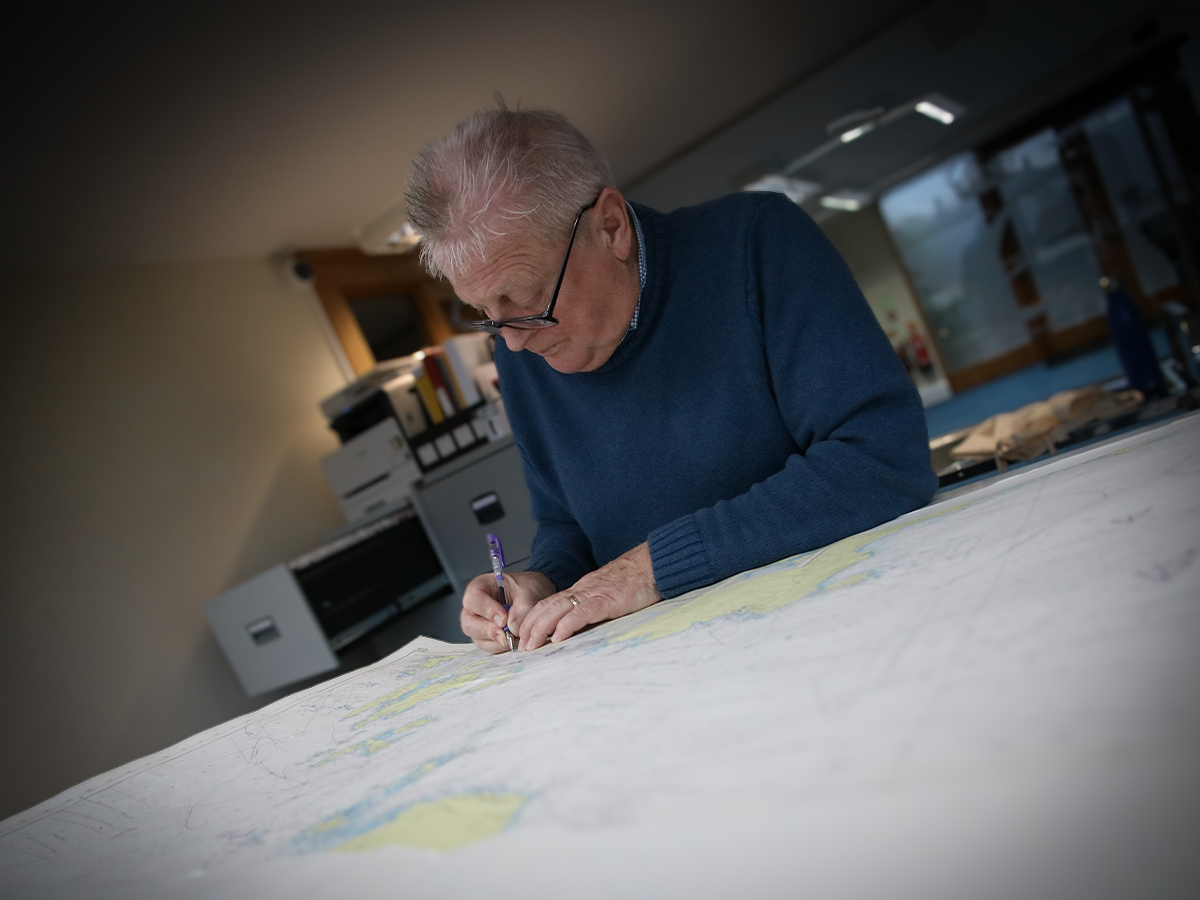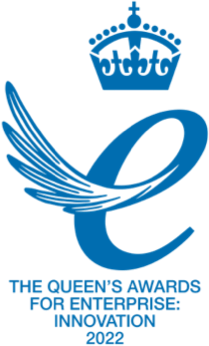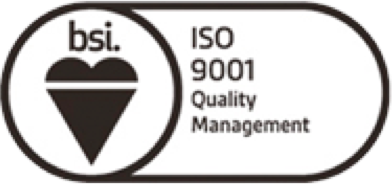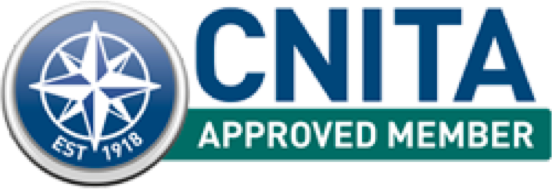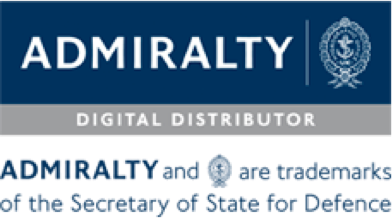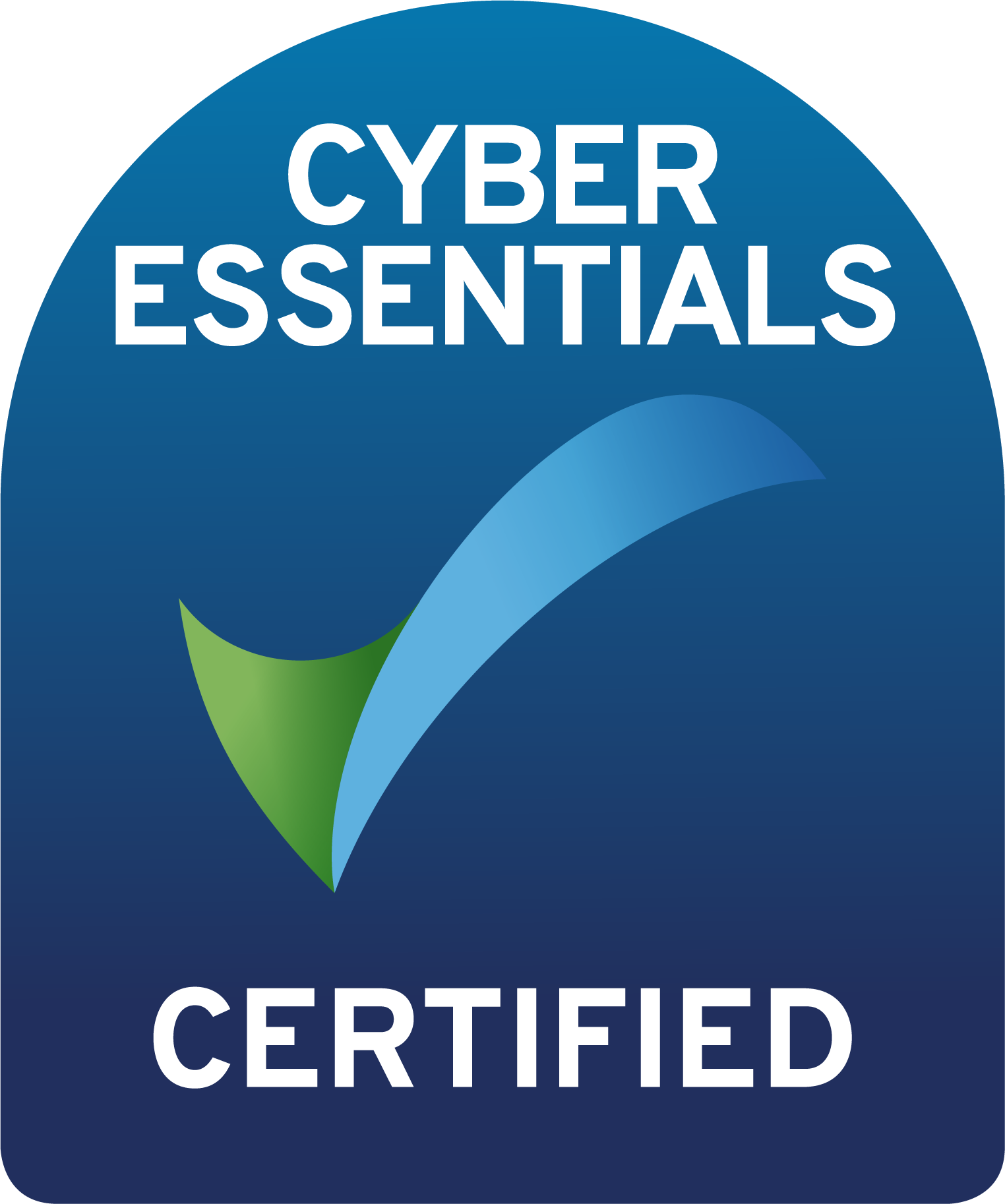One of the many services a dsnm client has available to them, is the luxury of clearing their bridge of clutter, and sending their paper chart folios to us to put into storage. This is advantageous to many yachts running a dual-season charter between the Med and the Caribbean, as they are likely to know which charts the boat is and isn’t going to need throughout the seasons. The other beauty of this is that they can take full advantage of the paper chart correcting service we undertake in-house.
Many paper primary vessels (and regular Compass users) will know that we provide weekly chart corrections from the UKHO. These can be printed out onto tracing paper so that the corrections can be completed on board as required.
Meet Duncan
Duncan Marshall is the resident Chart Corrector at dsnm and has worked in various sectors of the maritime industry over his 52 years. His knowledge and experience in charting and navigation is extensive (including 15 years as a Navigator in the Merchant Navy), taking great pride in his work.
As he works away tirelessly behind his correcting table to ensure you navigate safely throughout the world, he gets a good look at some of the condition of the charts in storage. In doing so, Duncan has picked up on some of the corrections carried out and has offered some insight into best practice when chart correcting.

Corrections should always be done in a magenta-coloured fine tipped pen. Why magenta? This is so the markings remain clear and visible at night under red light on the bridge. It seems obvious; however, you’d be surprised at how many people correct with a red pen that isn’t visible under the red night lights.
Look after your charts. A single folio can hold up to 50-60 charts, anymore and you risk your charts getting damaged, and whilst a bit of edgewear may not necessarily affect your ability to navigate, Duncan insists it shows a lack of respect to your work. “When I was in the Navy, if I ever leaned on a chart that was overlapping my desk while I was correcting it, I would get a clip round the ear”, he says.
Best Practice
We have picked out a few examples where corrections have been made and, although they have not been made incorrectly, they have additional markings that are not required. Removing these markings will allow chart correctors to do corrections quicker and reduce the chance of obscuring information within the chart such as, depths. They will also ensure your charts are kept neat and easy to understand for anyone who may use them in the future.

This marking isn’t required and is just to inform you that it needs removing from the chart.
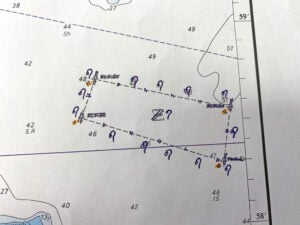
An example of unnecessary markings in place with the correction
‘In Lieu’
As with the previous marking, the wording in this correction isn’t required on the chart. The only addition is the marking to inform the Navigator what replaced the original.
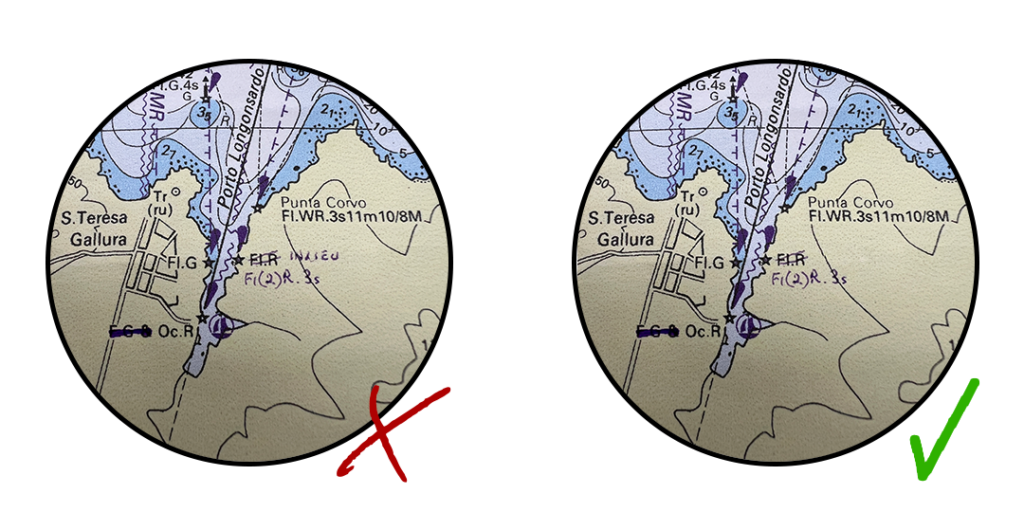
These images are for visual representation only to demonstrate the preferred correcting procedure.
Correction Year and Number
The best practice when providing the information at the bottom of your charts for corrections made is to, A. Keep it neat (Preferably all the same size) and B. Keep the year the corrections are made at the beginning.
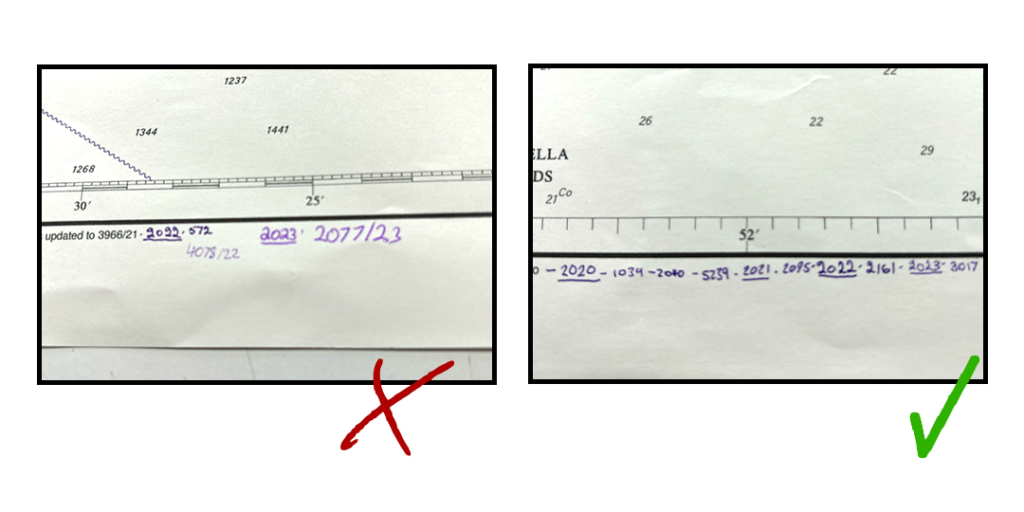
These images are for visual representation only to demonstrate the preferred correcting procedure.
Correcting ink
Correcting fluids such as Tipp-Ex are an absolute NO for use in chart corrections.
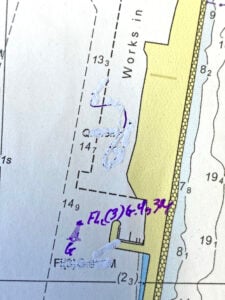
Our Correcting Process
It is essential that your charts are kept up to date for the safety of your navigation, so to ensure your charts are clear, accurate and easy to read, we closely follow the processes outlined in NP294 ‘How to keep ADMIRALTY Products up to date’. If you require a copy of this publication (digital or physical available), please speak with your dsnm Yacht Manager.
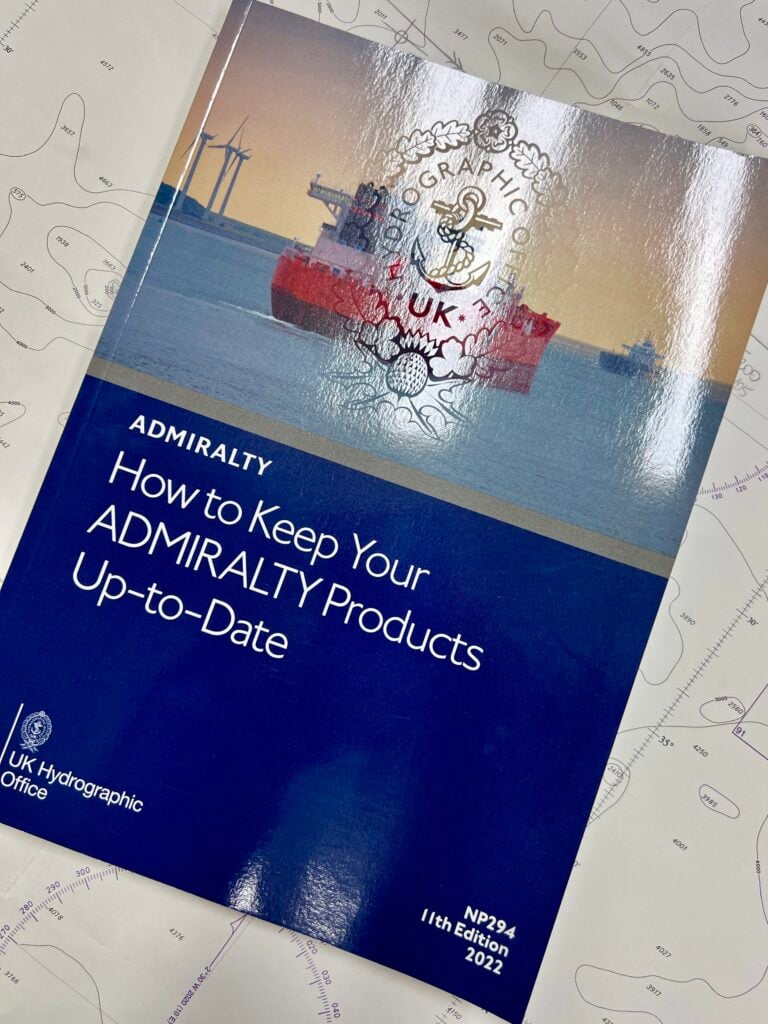
Initially, we check the charts over to make sure they are clear of things such as coffee cup stains (not a recognisable navigation symbol), inaccurate correcting, tears and markings. We then consider how many corrections have already been applied; any chart with 6 or more corrections are disposed of and replaced with a freshly printed copy. When a chart exceeds 6 corrections, they can start to get cluttered and difficult to read. Within our Compass software, you can utilise the search function from the Catalogue tab to find out all you need to know about corrections and information pertaining to each chart.
With the advancement of digital charting and the UKHOs announcement of the withdrawal of paper charts, correcting is becoming something of a dying art in the industry. Our in-house correcting team are fully trained to UKHO standards and available to update your charts at short notice.
In addition, we hold inactive folios for our clients in our fully insured storage facility when they are not required onboard. When crew request the charts back for their future cruising requirements, we provide the option to update them all prior to sending, so they are ready to use immediately on arrival.
ADMIRALTY Training Aids
When it comes to charting, the UKHO quite literally wrote the book, so there is no place better to find out the dos and don’ts of chart correcting. In addition to the previously mentioned NP294 publication, there is a well-composed playlist of videos on the ADMIRALTY YouTube channel that is a great guide for updating paper charts.
If you are interested in their comprehensive guide to updating ADMIRALTY Standard Nautical Charts (SNCs), click the link – https://bit.ly/ADMIRALTY-chart-correcting

